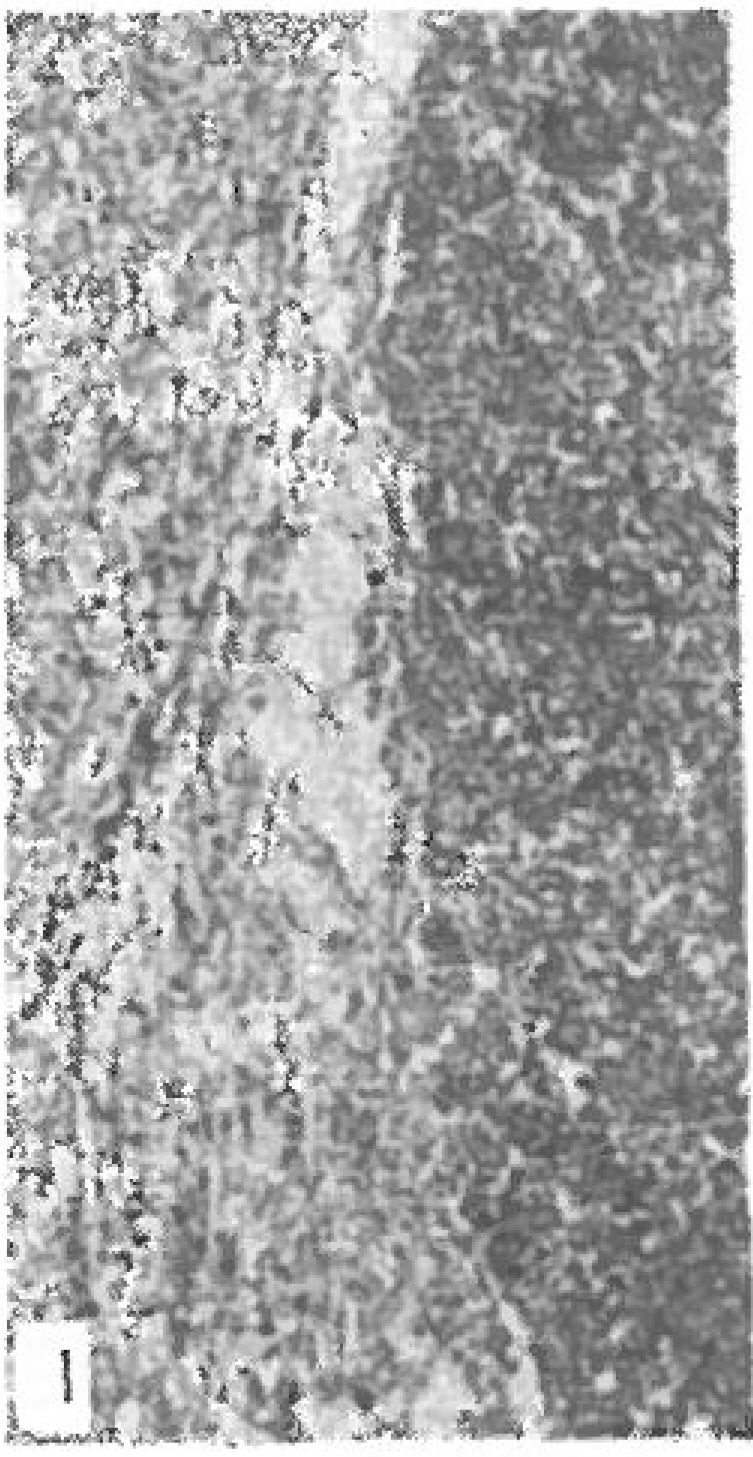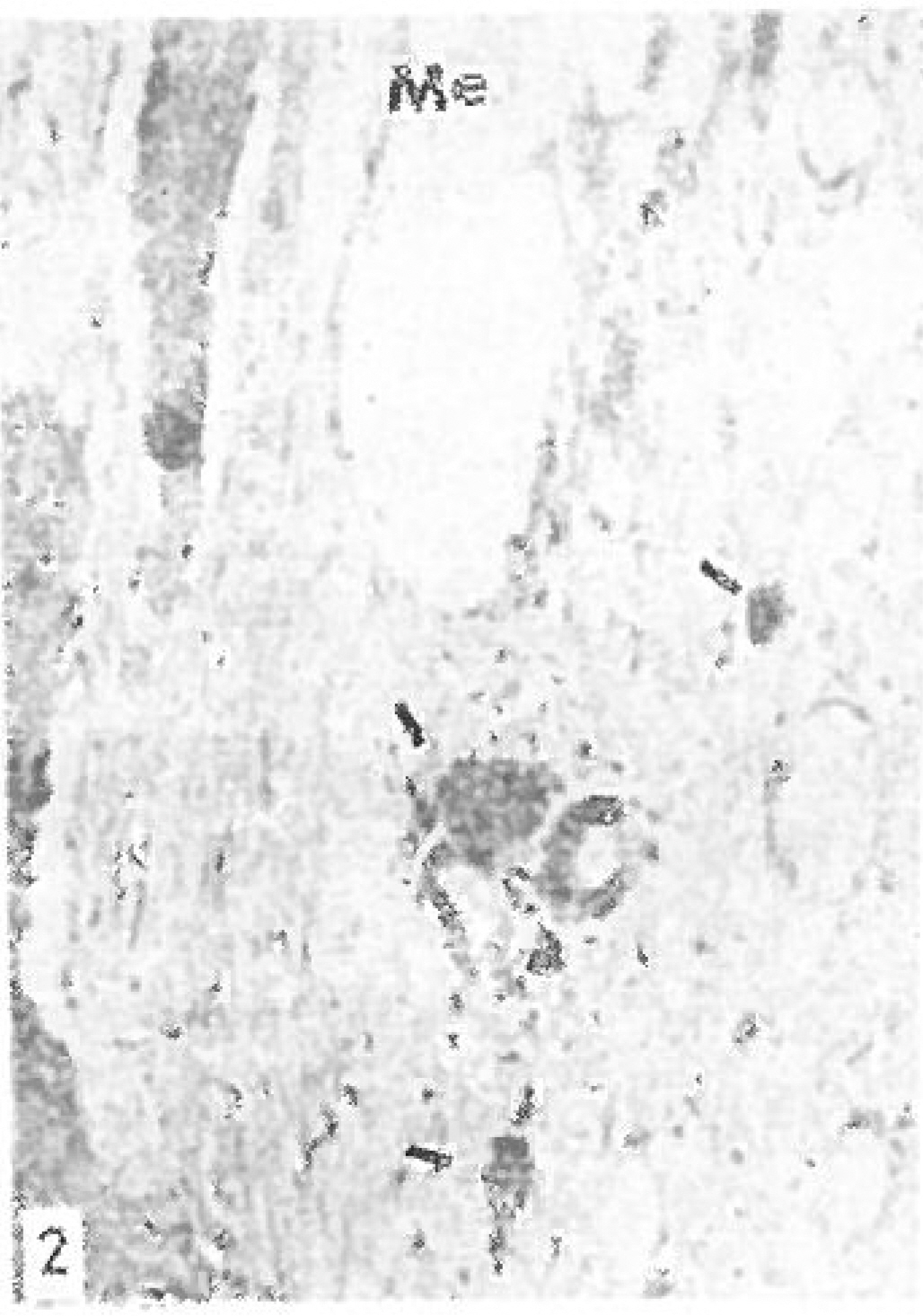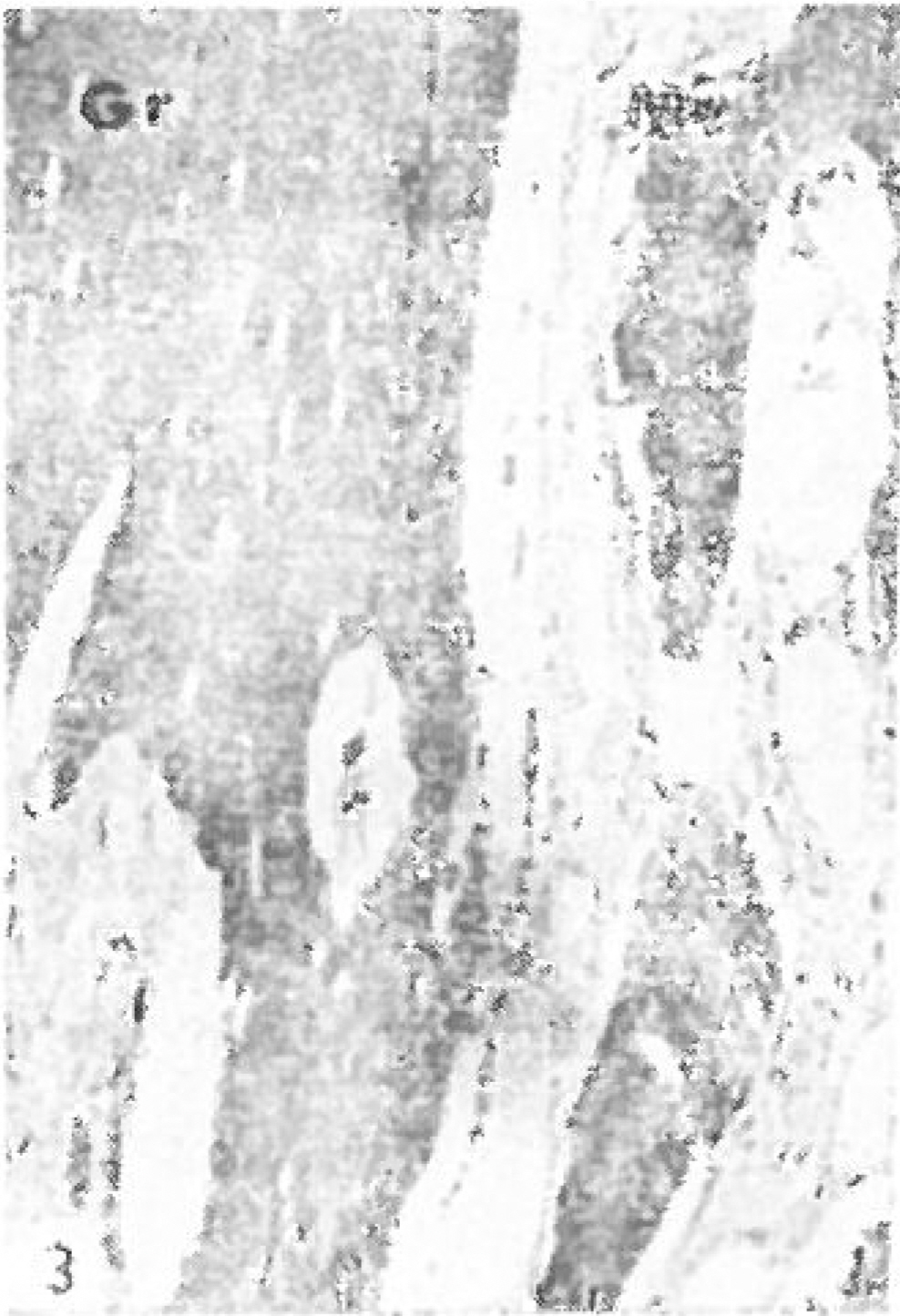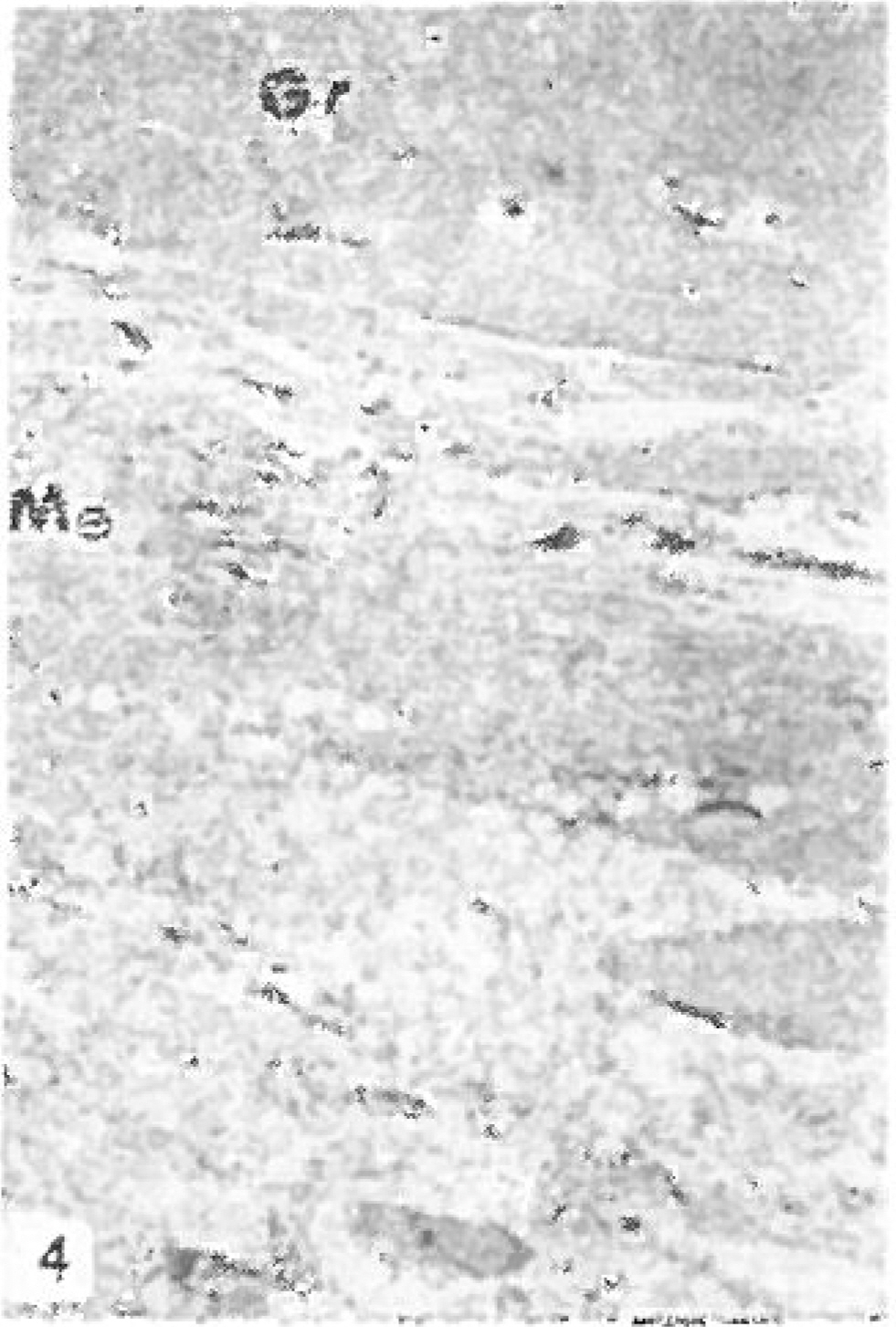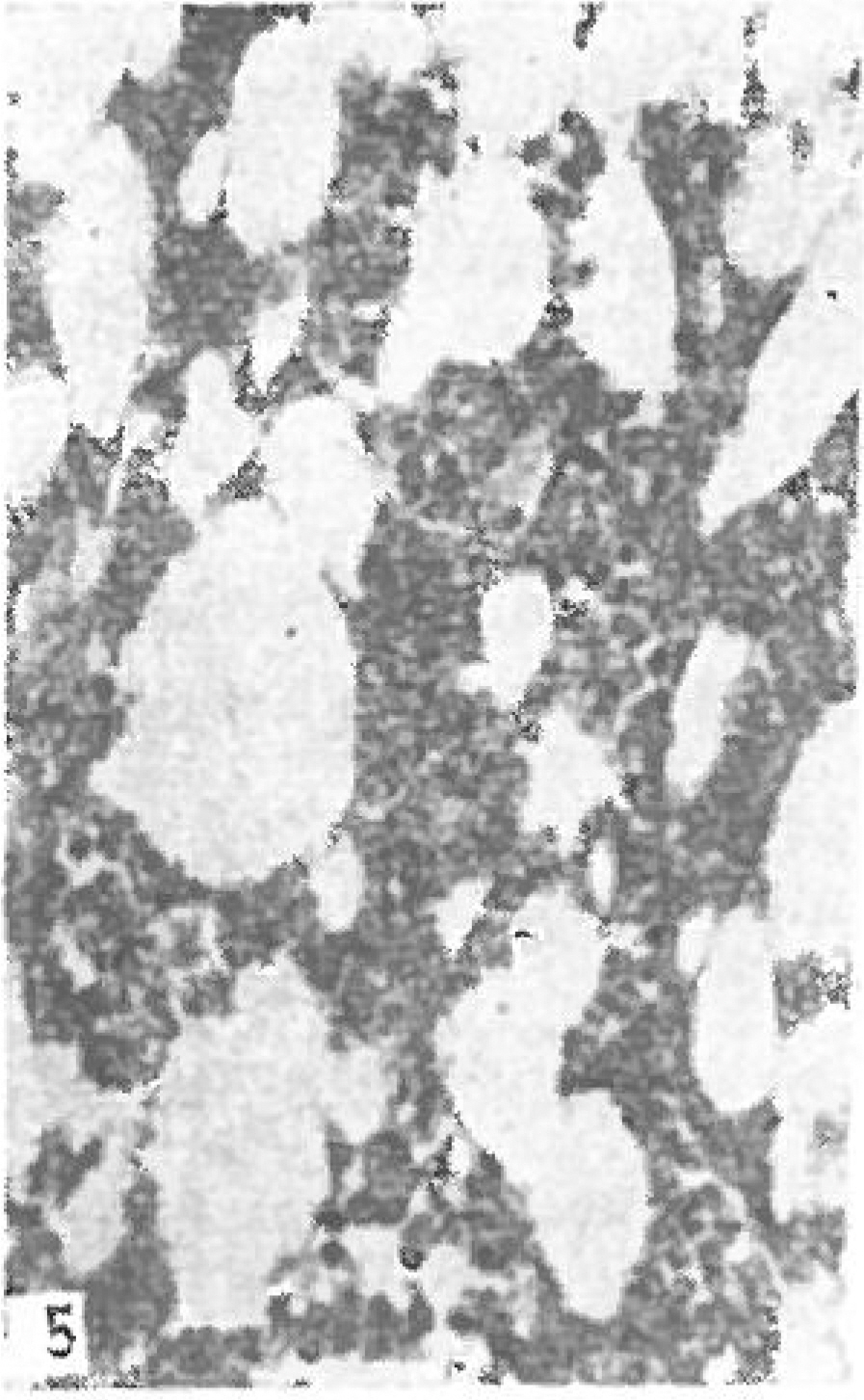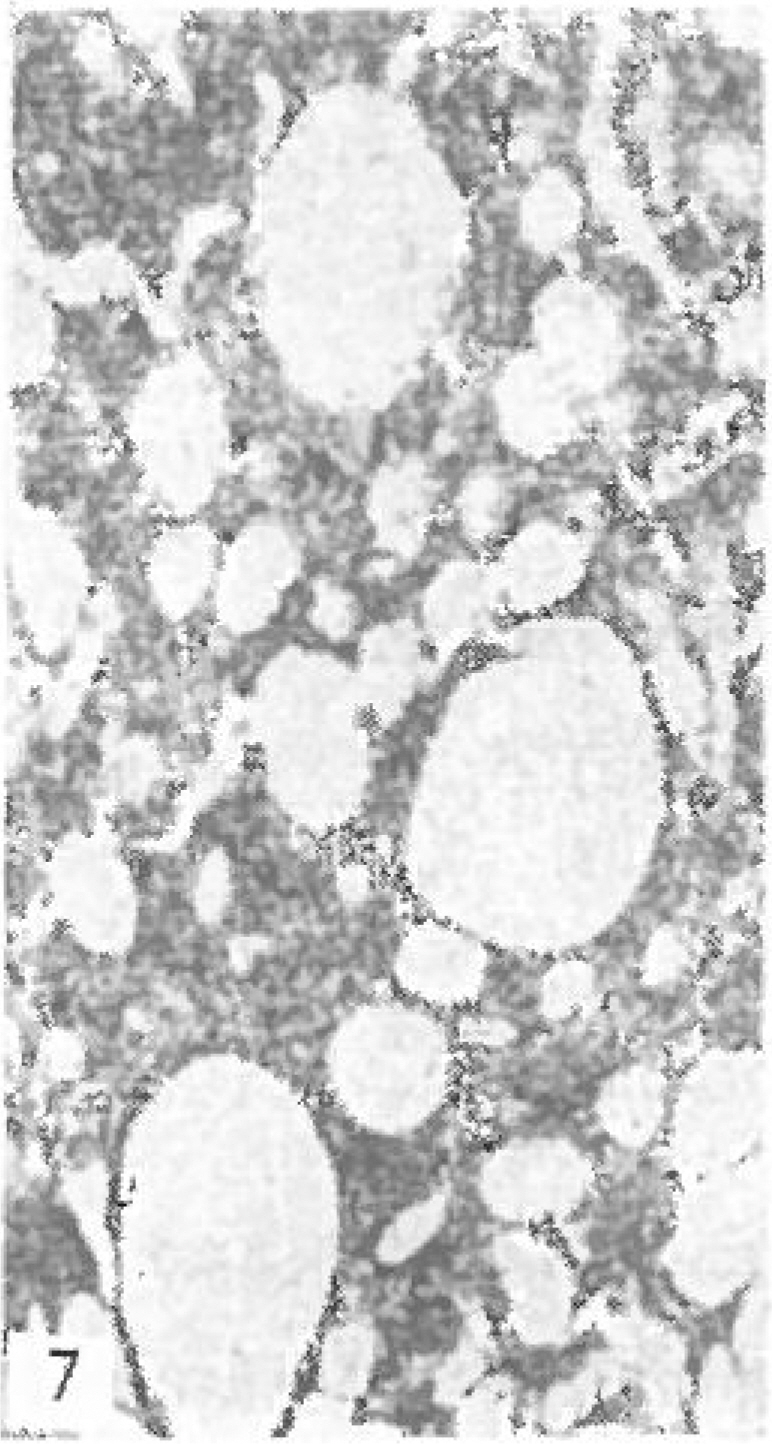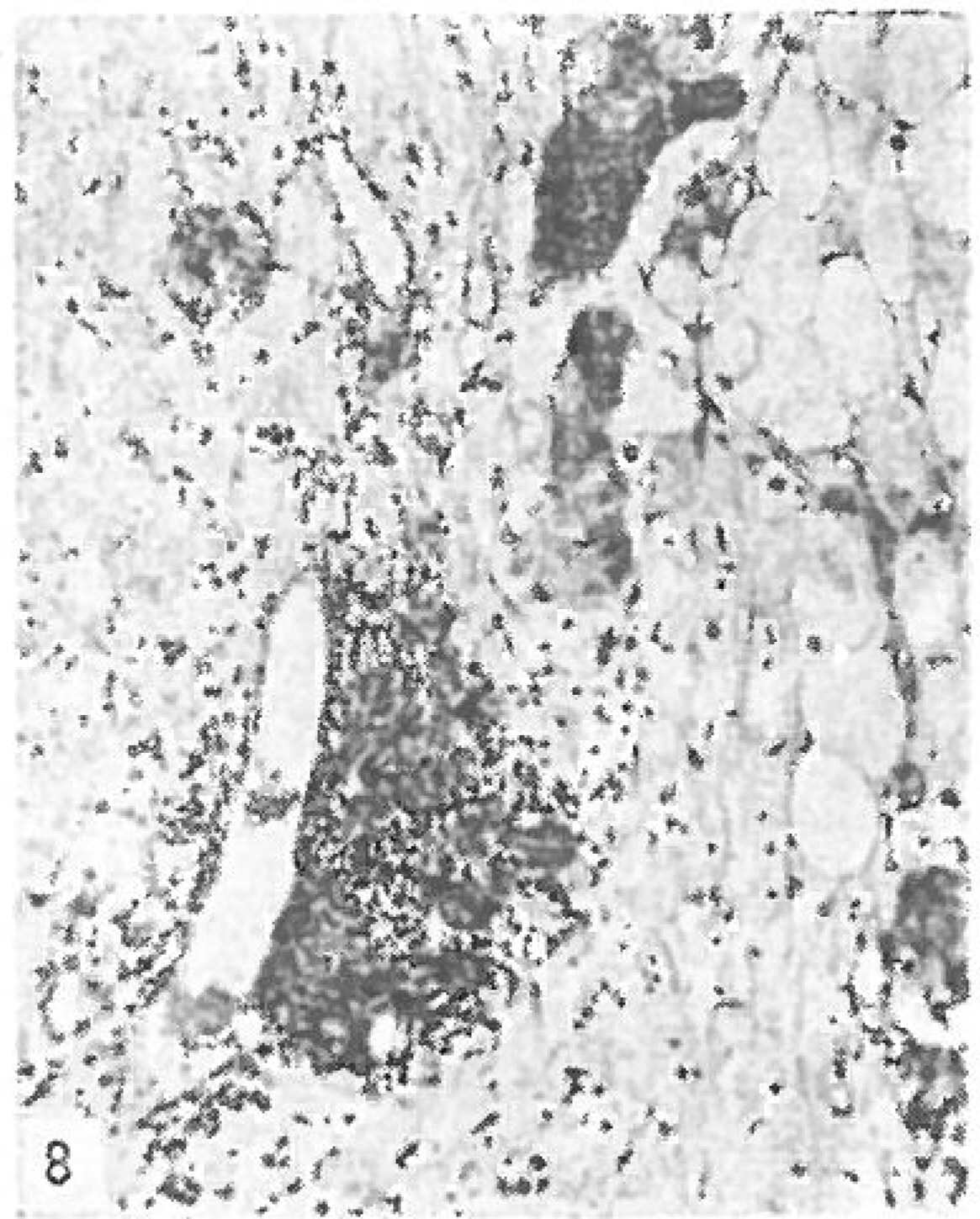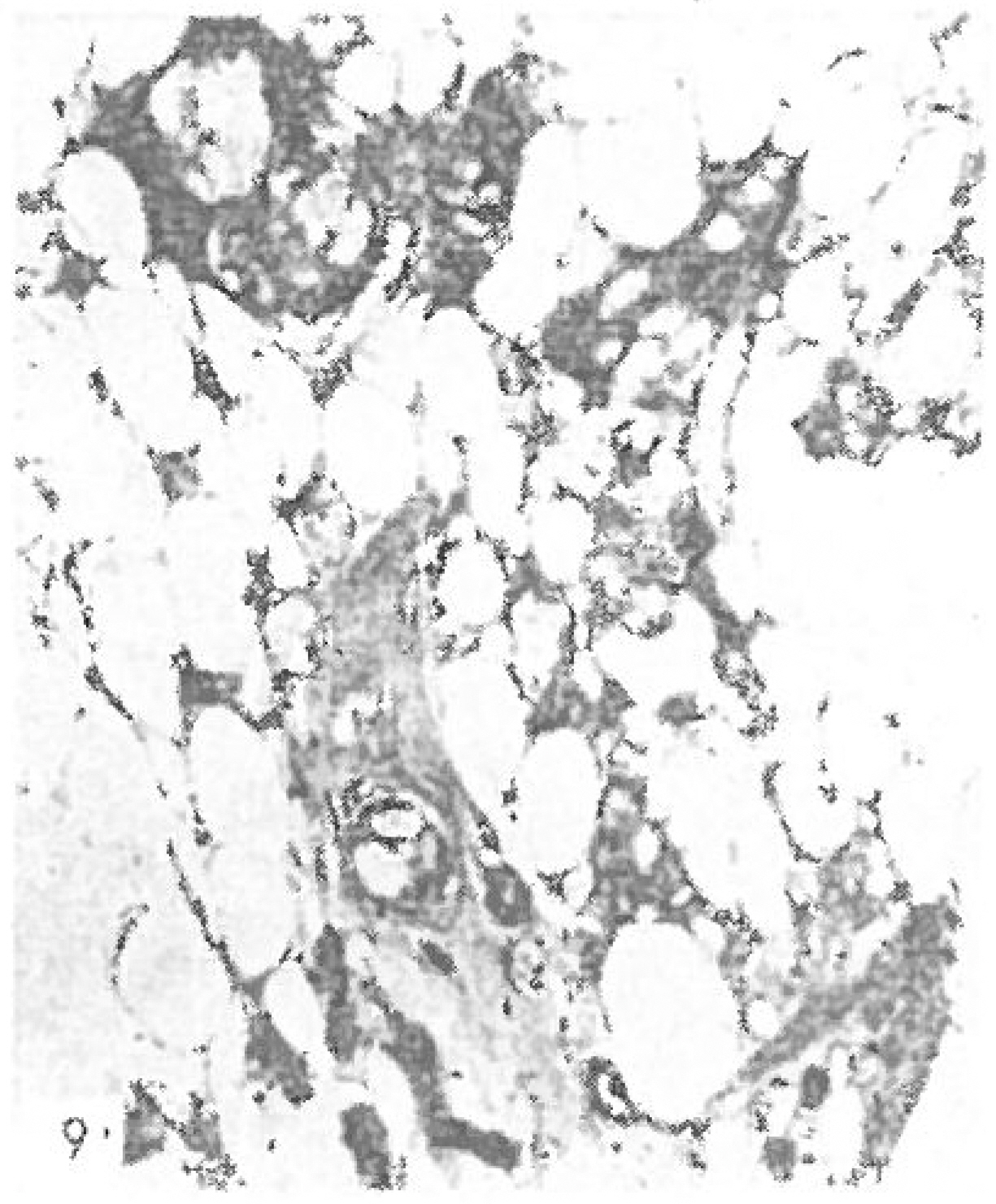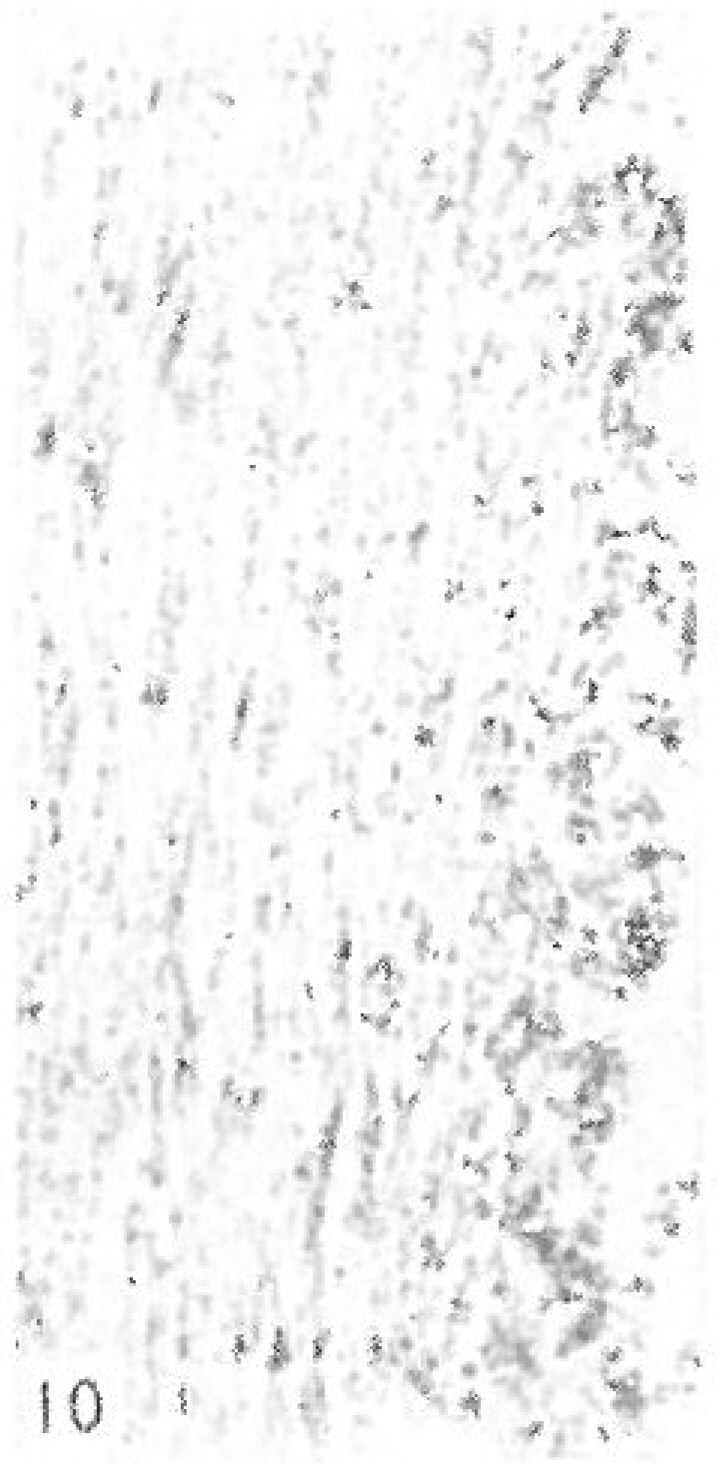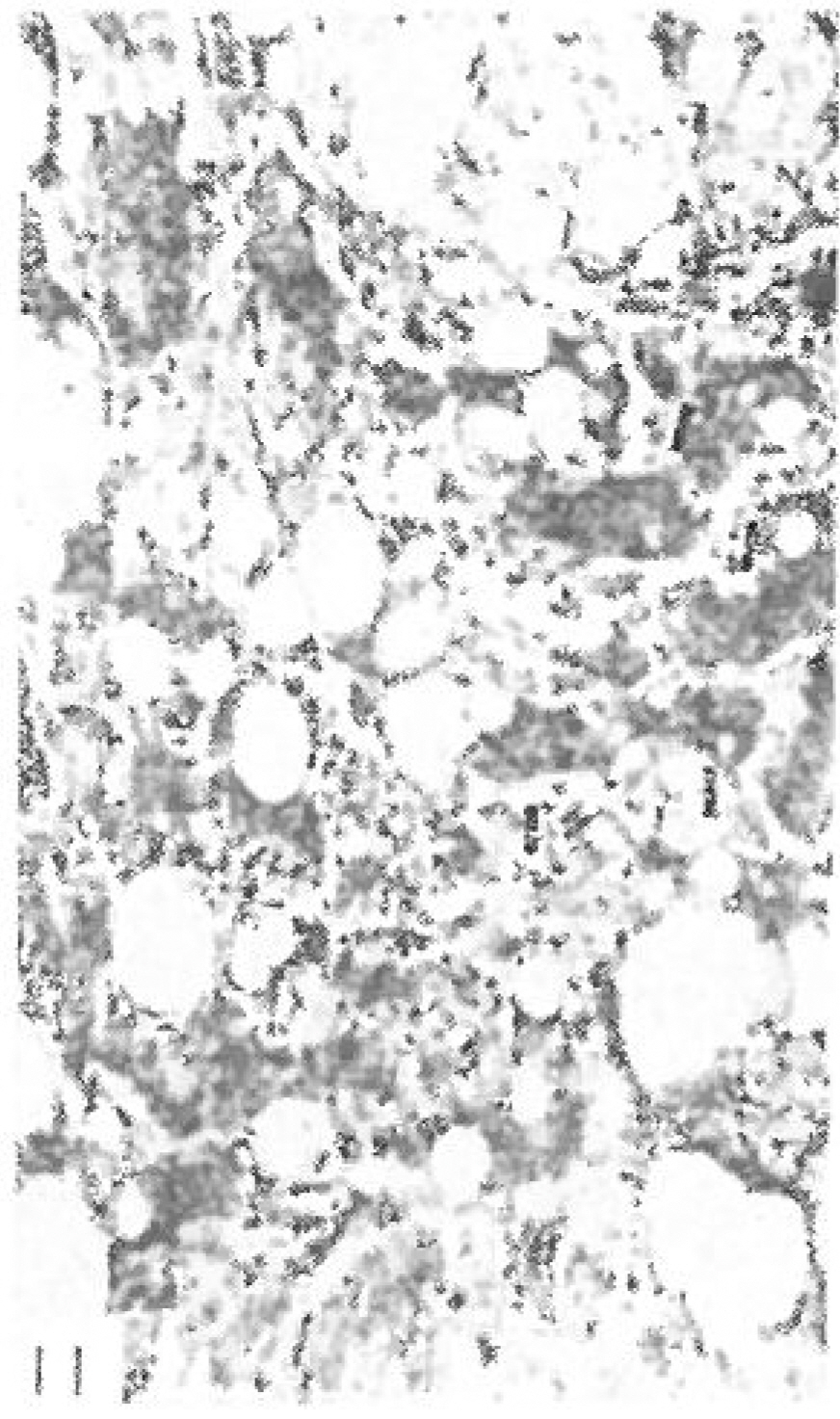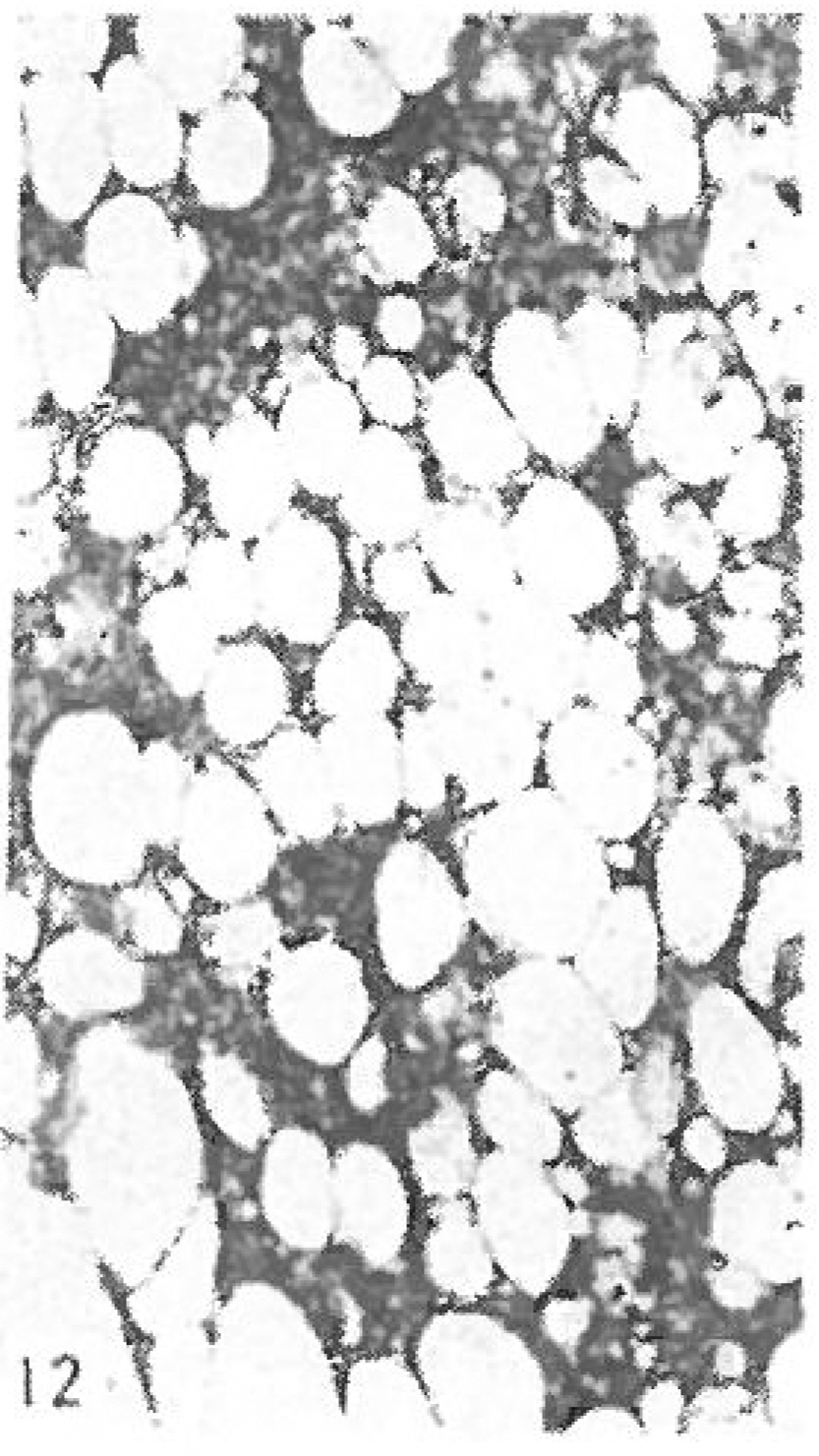J Korean Orthop Assoc.
1975 Mar;10(1):143-148. 10.4055/jkoa.1975.10.1.143.
Irradiation Effect on the Bone Marrow Regeneration after Homologous Bone Graft
- Affiliations
-
- 1Department of Orthopedic Surgery, Chonnam University, Medical School, Kwang-ju, Korea.
- KMID: 2471460
- DOI: http://doi.org/10.4055/jkoa.1975.10.1.143
Abstract
- The irradiation is said to have immunosuppressive effect on the allograft and so its effect on the regenerating pattern of the marrow structure following homograft was studied. In normal rabbit the resection of lem long radius was substituted with a homologous radius of same length after 2.000R irradiation of Cs and the graft was immobilized for three weeks with 3cm long intramedullary K-Wire fixation. For ten weeks period after removal of the wire. histological changes of the local medullary cavity were compared with the results obtained with those of autogenous and the homologous graft groups. 1. The autograft (A) group showed that the initial aggregate of the blood clot, the necrotizing tissue, and the inflammatory cellular infiltration almost disappeared at five weeks. and then the cavity was gradually replaced by the fibrous tissue, the fat cells, the new vessels, and the trabeculae, regaining the normal marrow structure after seven or ten weeks. 2. In the fresh homologous graft(H) group, the cellular infiltration was much pronounced and prolonged up to five of seven weeks. Besides the fat cells, the marrow contained the macrophages. the osteoblasts, and the osteoclasts between three and five weeks, and at ten weeks the regeneration of the marrow was incomplete yet. 3. The 2.000 R-irradiated homograft(R) group had, except the less intensive inflammatory cell infiltration, the changes similar to that of the H-group for five weeks. The local medullary cavity. however, was subsequently replaced by proliferation of the fibrous tissue, the developing blood vessels, the fat cells and the osteoblasts. At ten weeks the restitution of the marrow was nearly complete. 4. It follows from the above results that the restitution of the local marrow structure after the homologous graft, when irradiated with 2.000 R of PCs, was prompted favorably and showed histological changes similar to those of the autograft group at ten weeks.
MeSH Terms
Figure
Reference
-
1.Bonfiglio M.., Jeter W. S.., Smith C. L.The immune conception: Its relation to bane transplantation. Ann. N. Y. Ac. Sc. 59:417. 1955.2.Brooks D. B.., Heiple K. G.., Herndon C. H.Immunological factors in homogenous bone transplantation. IV. The effect of various methods of preparation and irradiation on antigenicity. J. J. Bone and Joint Surg. 45-A:1617. 1963.3.Burwell R. G.Studies in the transplantation of bone. VII. The fresh composite homograft-autograft of cancellous bones. An analysis of factors leading to osteogenesis in marrow transplants and in marrow-containing bone grafts. J. J. Bone and Joint Surg. 46-B:110. 1964.4.Chalmer J.The influence of transplantation immunity on bone homografts. J. Bone and Joint Surg. 40-JA:10. 1958.5.Chalmer J.Transplantation immunity in bone homografting. J. Bone and Joint Surg. 41-B:160. 1959.6.崔元變(Choi, W.S.). 髓內釘固定後骨髓內網內組織의再生에關한赏驗的研究. 綜合醫學. 13(5):383. 1968.7.Curtiss P. H.., Herndon C. H.Immunological factors in homogenous bone transplantation. I. Serological studies. J. Bone and Joint Surg. 38-A:153. 1956.8.Enneking W. H.Histological investigation of bone transplant in immunologically prepared ani- jnals. J. Berne and Joint Surg. 39-A:597. 1957.9.Goethman L.The arterial changes in experimental fractures of the rabbit's tibia treated with intramedullary nailing. Acta. Chir. Scand. 120:289. 1960.10.Gresham R. B.., Perry V. P.., Wheeler T. E.U.S. Navy tissue bank report on current methods and experimental approaches to the future. J. Am. Med. Assoc. 183:13. 1963.11.Gustilo R. B.., Nelson G. E.., Hamel A.., Moe J. H.The effect of intramedullary nailing on the blood supply of the idaphysis of long bones in mature dogs. Presented at the Orthopedic Research Society Meeting in. 1964.12.Kuentscher G.Die Marknagelung von Knochenb- ruchen. Arch. Klin. Chir. 200:433. 1940.13.Morgan J. D.Blood supply of growing rabbit's tibia. J. Bone and Joint Surg. 41-B:185. 1959.
Article14.Tonna E. A.., Cronkite E. P.Autoradiographic studies of cell in the proliferation of intact and fractured femora of mice utilizing DNA labelling with H-thymidine. Proc. Soc. Exp. Biol. N. Y. 107:719. 1961.15.Trueta J.., Cavadlas A. X.Vascular changes caused by the Kuentscher type of nailing. J. Bone and Joint Surg. 37-B:492. 1955.16.Urist M. R.., Wallace T. H.., Adams T.The function of fibrocartilaginous fracture callus. Observations on transplants labelled with tritiated thymidine. J. J. Bone and Joint Surg. 47-B:304. 1965.
- Full Text Links
- Actions
-
Cited
- CITED
-
- Close
- Share
- Similar articles
-
- Bone regeneration post-bone marrow necrosis mimicking hyperparathyroid bone disease
- Effective Preparation of A Bone Marrow Graft
- Space-maintaining and osteopromotive effect of freezedried bone graft in the procedure of GBR
- Role of Angiogenic Stem Cells in Bone Regeneration
- Multiple ways for the same destination: bone regeneration

